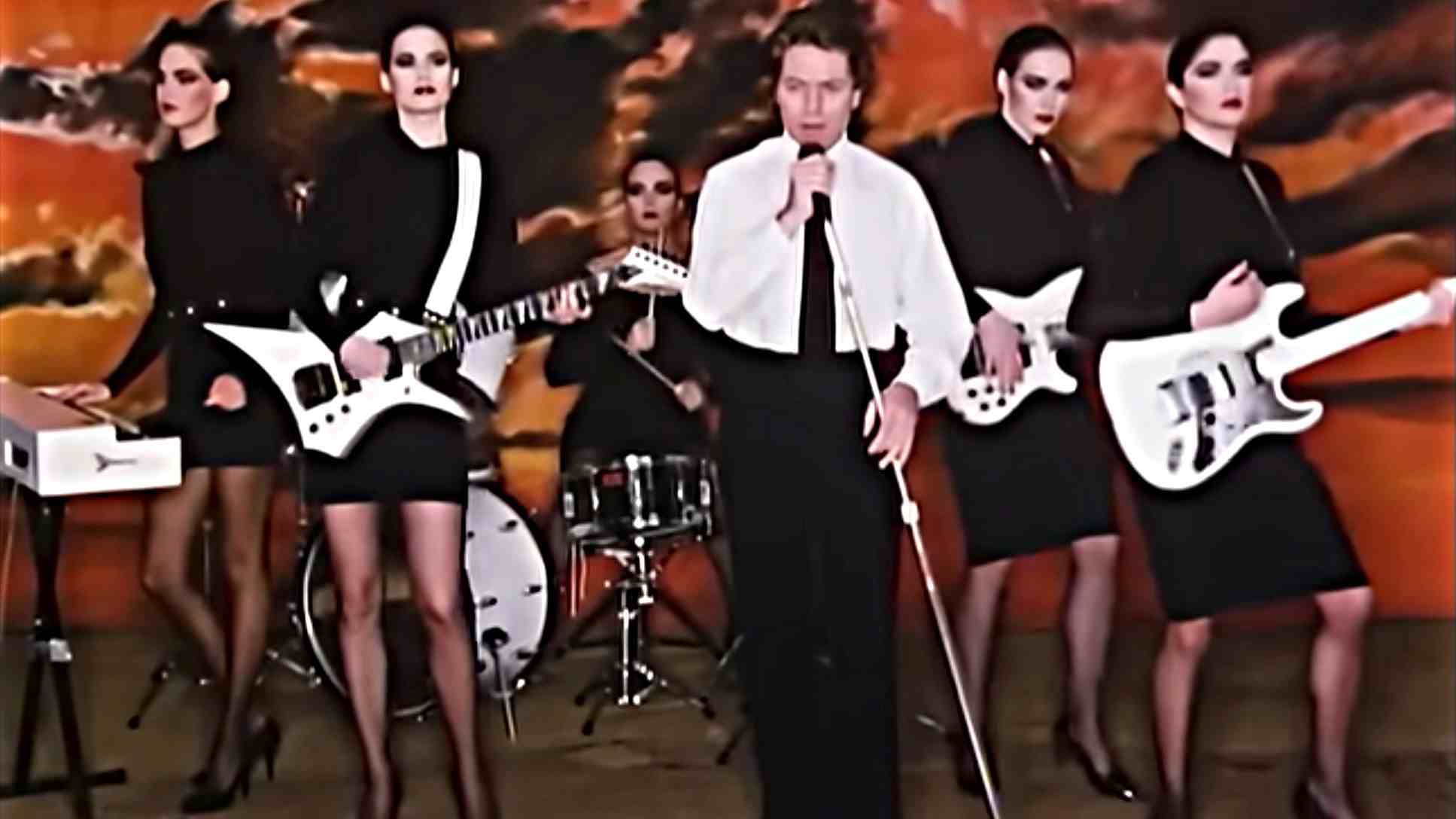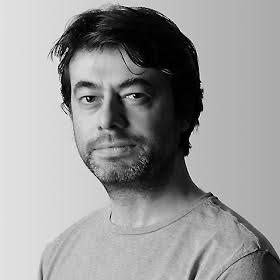“The groove was so thick, and what am I playing? A simple, Boom-Bop-Tish-Bop-Boom-Bop? It was unbelievable”: The making of Robert Palmer's Addicted To Love
We go deep behind the scenes with the team behind the hard-hitting global smash that turned around Palmer’s career

It’s incredible to think that Addicted to Love – while obviously a surefire smash once it was in the can – was actually the third single to be released from Robert Palmer’s 1986 album Riptide.
Following a disappointing UK number 95 for lead-off single Discipline of Love and the number 85 ‘hit’ of its title track, Palmer had gone from the top of his game to being on his uppers.
The early projections for the new album – his eighth – weren’t looking good and yet, just a year earlier Palmer had been flying high.
Following his quirky new wave early eighties hits Clues and certified '80s classic Some Guys Have All The Luck, the established solo artist (following his time with Vinegar Joe) had, in 1985, landed the lucrative gig fronting The Power Station, the rockier Duran Duran side project featuring the band’s Andy Taylor and John Taylor.
The project would be a sure-fire winner and play a huge part in boosting Palmer’s quirky soul/new wave profile in a new pop direction. What’s not to like?
Plus, the band would also bring in not one but two members of Chic, with their bassist Bernard Edwards in the producer’s chair (alongside his regular engineering collaborator Jason Corsaro) and Chic’s inimitable Tony Thompson on drums. The Duran/Edwards/Corsaro combination had already been put together to devastating effect for Duran Duran’s global hit bond theme A View To A Kill in early ‘85.
And the Duran member’s hook-up with Edwards would be a natural progression for the band after working with his Chic bandmate Nile Rogers for The Reflex and Wild Boys the year before.
Want all the hottest music and gear news, reviews, deals, features and more, direct to your inbox? Sign up here.
After the project’s predictable success (with lead single Some Like It Hot becoming a US Billboard number six) Palmer departed after a job well done to consider his new direction and newfound fame, with label Island cleverly able to score the services of that same Power Station production dream team for his next solo album.
With Edwards and Corsaro in the bag, getting Thompson in on drums once more was a formality, effectively putting the Power Station band and their producer and engineer back together sans the (now reformed) Duran Duran contingent.
The subsequent recording sessions would be financed by Island Records and take place at Compass Point Studios in Nassau, The Bahamas, which – conveniently – was where Palmer was living at the time. What could go wrong?
Well, there was the small matter of those two flop singles. Perhaps by the end of ‘85 the post-Power Station new pop/rock Palmer wasn’t such a bankable prospect?
Turning the 'Tide
By this point, Palmer’s management’s relationship with Island Records had grown rather fractious with the company willing to indulge the obvious star-power and potential of Palmer (top producers… session musicians… and financing his stay in The Bahamas) while seemingly unable to obtain the hits required to keep the entire enterprise afloat.
It looked like his off-beat early 80s charm and fortuitous hook-up with two-fifths of Duran Duran were now far behind him, with the fate of the yet-to-be-released ‘86 album Riptide album now in limbo.
Nevertheless, at Compass Point, Palmer and team had been successful in capturing magic. It was just that Island and the record-buying public didn’t know it yet.
Tony Thompson set the scene for Riptide’s turnaround track to Modern Drummer: “We did Addicted To Love in a recording studio in the Bahamas called Compass Point. At the time Robert lived across from the studio. So Bernard Edwards, one of my favorite guitarists, Eddie Martinez, keyboardist Jeff Bova, Andy Taylor, who also played guitar on that track and me went down to do Robert’s record.”
"[Palmer] had such eclectic tastes," Martinez told UCR. "He'd listen to Billie Holiday, Nat King Cole and then have Sepultura and Husker Du on the same cassette. It was great music, irrespective of the genre.
"I remember hearing Addicted to Love for the first time. He told me he dreamt the song and then wrote the lyrics. We recorded the tracks with Bernard Edwards producing, Jason Corsaro engineering and printing all of the stuff.
"He brought down a Sony 24 track digital machine to the sessions, which as you know, this is pretty early on. People were still hanging with analog, but Jason was such a brilliant engineer."
“As a member of Chic and the Power Station, Tony was a powerhouse drummer that put together a style which transcended the styles of rock, funk, and pop,” explained The Legends of Music. “When you celebrate hits such as Good Times and Le Freak by Chic, everyone can’t talk enough about how infectious the groove is. Who do you think invented that?
“Tony really had a talent for creating tight, danceable beats and that is what made him stand out in a rhythm-driven disco era. However, where he really came into his element was on Robert Palmer’s Addicted To Love. His performance on that track was conclusive proof that Tony was a master at blending rock’s intensity with funk grooves.”
Elaborating on that Addicted To Love drum sound, “Everyone always assumed that there was some kind of special knobs turned when we did that first Power Station record,” explained Thompson. “All it basically was, was a brand-new Yamaha kit in a very live, brick, recording studio in London called Mason Rouge.
“I hit the drums very hard. That’s it! [laughs] We did Some Like It Hot, and everyone had all these stories, saying all kinds of things, about tricks that were going on. Samples weren’t even around back then. So, bottom line, the sound came from a good kit, hit hard, in a nice live room.”
And Addicted to Love would take that idea and Thompson’s hard-hitting playing to the next level.
“That was the first time anyone ever spent time to get a drum sound like that,” Thompson explained. “I remember my drums were set up in the room, and there was a door that led to a hallway. The engineer, Jason Casaro, took a tube the size of my bass drum and built this tunnel from my bass drum all the way out into the hall and up the stairs. It was this weird thing he hooked up. And it worked.”
"Jason [Corsaro] had created a scenario where Tony Thompson's drum set was facing out of the room,” recalls Martinez. “The doorway to the studio was kept open, and he set up Tony's drum set right at the opening of that door. Then outside that door there was a long hallway, I'd say, easily, 30 feet, if not longer.
“He set up microphones, respectively, at different distances and through his madness, came up with [that sound]. I mean, the drum sounds on that album, and Addicted in particular, I just listened to an isolated track of Tony playing on that and was just blown away."
And, of course, it’s not just the drums that makes Addicted magical.
"[Riptide] enabled me to go into everything that I know, or everything I knew at that time as a guitarist,” relative to harmony and things like that, in terms of chord voicings," says Martinez. "I think that was really important for that record to be able to have that kind of background and apply it to the music. It was like a blank canvas and whatever you heard, you were allowed to explore.
“To me that's heaven for a guitarist working on a record."
Then of course there’s the music video.
Directed by English photographer Terence Donovan, it features a set of rouge-lipsticked expressionless mono models miming as Palmer’s backing bands while Palmer goes through his frontman motions as if this kind of thing happens every day.
Speaking to Q magazine, Mak Gilchrist (on bass) said: “We were meant to look and act like showroom mannequins. Director Terence Donovan got us tipsy on a bottle of wine and as we were having our make-up retouched I lost balance on my heels and knocked the top of my guitar into the back of Robert's head, and his face hit the microphone.”
The video proved to be such a hit that Palmer would recycle its stoney-faced model concept for I Didn't Mean to Turn You On (also from Riptide), and follow-up album Heavy Nova’s Simply Irresistible, and the animated Change His Ways.
But we’ll leave it to Thompson to sum up Addicted’s magic: “The groove in the house was so thick, and what am I playing? A simple, Boom-Bop-Tish-Bop-Boom-Bop. It was unbelievable.
“I locked into that with everyone else swinging, and it brought the walls down. That song was a masterpiece.
Daniel Griffiths is a veteran journalist who has worked on some of the biggest entertainment, tech and home brands in the world. He's interviewed countless big names, and covered countless new releases in the fields of music, videogames, movies, tech, gadgets, home improvement, self build, interiors and garden design. He’s the ex-Editor of Future Music and ex-Group Editor-in-Chief of Electronic Musician, Guitarist, Guitar World, Computer Music and more. He renovates property and writes for MusicRadar.com.
You must confirm your public display name before commenting
Please logout and then login again, you will then be prompted to enter your display name.


